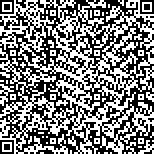| 摘要: |
| 合成孔径雷达(SAR)以其高分辨率、能不受雨云影响实施全天时全天候全方位监测, 在海面溢油灾害应急监测过程中发挥着越来越重要的作用。溢油是因为海面油膜抑制了毛细波和重力波, 在SAR图像上呈暗斑而被识别。然而, 海面溢油的乳化过程直接影响SAR 对海面溢油后向散射截面的观测精度。本研究以物理海洋学和激光原理以及海面电磁散射理论为基础, 通过实验利用激光扫描仪观测海面溢油粗糙度, 分别与溢油特征参数、后向散射系数建立对应关系; 耦合海面溢油参数与后向散射截面的关系, 利用电磁散射数值建模方法, 建立海面溢油散射模型, 研究海面溢油乳化过程对微波后向散射截面的影响。本项目的研究将为SAR 监测海面溢油量、溢油厚度及油品分布格局提供了可能; 将进一步揭示海面溢油的散射机制, 提高SAR 海面监测溢油的精度和能力。 |
| 关键词: 微波后向散射 激光扫描仪 海面溢油 溢油海面粗糙度 乳化 |
| DOI:10.11759/hykx20150927002 |
| 分类号: |
| 基金项目:国家自然科学基金面上项目(41576032, 41176160) |
|
| Scattering model research based on two-dimensional laser observation of spilled oil and emulsification processes |
|
GUO Jie,MENG Jun-min,HE Yi-jun
|
| Abstract: |
| Synthetic aperture radar (SAR) is an effective microwave sensor to detect oil spills, which can image ocean surfaces during the day and night with high resolution and over large coverage areas independent of cloud cover. SAR plays an increasingly important role in oil spill disaster emergency monitoring of the sea surface. Oil spill detection using SAR images relies on the fact that oil slicks decrease the sea surface back-scatter of capillary-gravity waves, which result in a dark formation that contrasts with the brightness of the surrounding spill-free sea. However, the emulsifying processes of the sea surface oil spill directly affects the observational precision of the scattering cross-section in SAR. This project will be based on physical oceanography, the principle of lasers, and the sea surface electromagnetic scattering theory. Using a laser scanner, observing the sea surface roughness of an oil spill can establish a corresponding relationship with the characteristic parameters of oil spills and the scattering coefficient. We experimentally coupled the relationship between the characteristic parameters of oil spills with the scattering cross-section. Using electromagnetic scattering, numerical modeling sets up the sea surface scattering model of oil spills and allows the study of the influence of the oil spill emulsifying process on the scattering cross-section. This project will provide the possibility to monitor oil spill volume, thickness and distribution pattern by SAR. It will further reveal the sea surface scattering mechanisms of oil spills and improve the accuracy and ability of monitoring oil spills by SAR. |
| Key words: microwave scattering cross section laser scanner oil spill of sea surface roughness of oil film emulsification |
